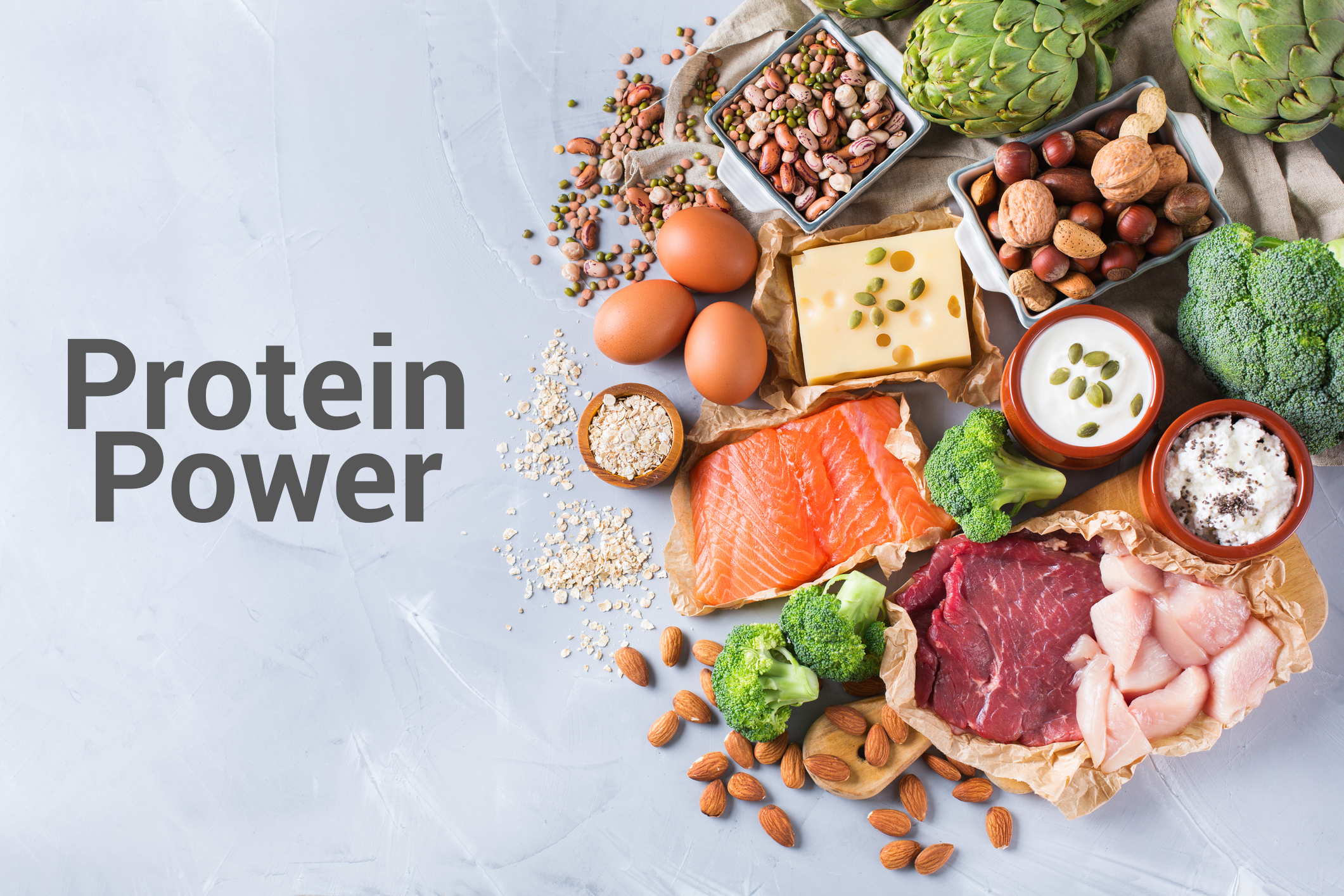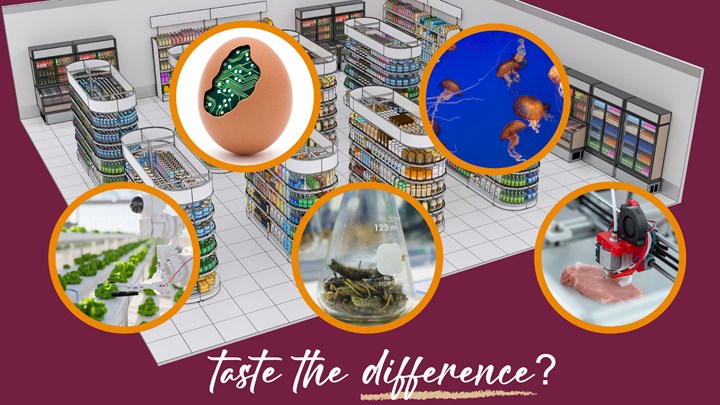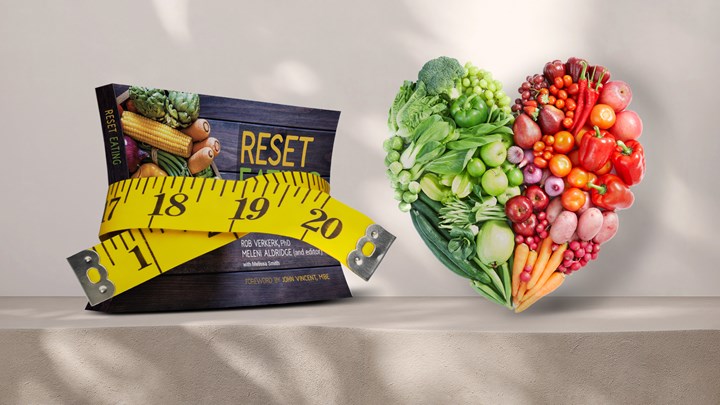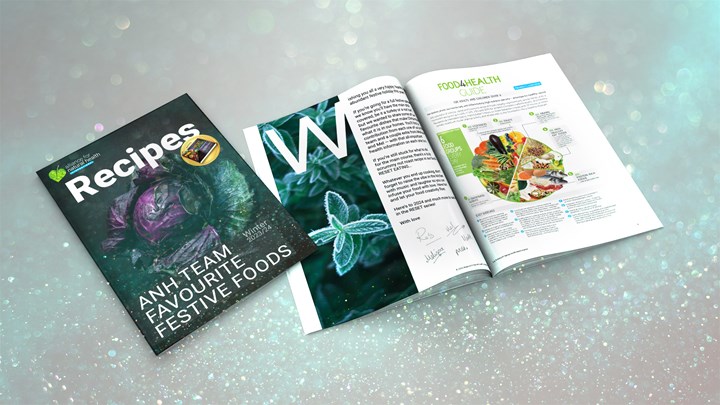By Meleni Aldridge, executive coordinator
The subject of protein is causing somewhat of a tussle right now. Whether you’ve read the media reports around the EAT-Lancet report, have become vegan because you’re passionate about the planet, subscribe to a carnivorous diet after putting your autoimmune disease into remission or are an omnivore walking an evolutionary dietary pathway, chances are you might be a bit confused right now.
Apart from not knowing who to trust, because none of the so-called experts seem to agree (and there are some heavy hitters out there), what do you believe and how do you make the right food choices for You? It seems as if the world of nutrition science is out to lunch on the subject of protein. Everyone appears to be fighting their corner with passion and zeal as if it’s the ONLY way! Truth is, we’re all individual and there is no one diet that will fit us all. That’s why Willett et al who conjured up the ‘Healthy Reference Diet’ in the EAT-Lancet report used intake ranges, not just single values. In this brief article, I hope to cut through some of the misinformation on proteins, shed more light on what it is, how much we need and why our bodies depend on it. How you use the information to inform your dietary path is then up to you.
[Quick flip to How much is enough?]
Protein – food group, food source or energy carrier?
Protein is the collective name given to large molecules which are made up of chains of amino acids (AA). These AA chains can be hundreds or thousands in length and they are able to fold into highly complex arrangements, which gives you some idea of the complexity of proteins and an indication of their importance in our bodies. The terms peptides and polypeptides refer to the smaller chains of amino acids that make up the polymers we call proteins. If the chains are less than 30 amino acids long we tend to refer to them as peptides, rather than proteins. Proteins not only have a host of functions within the body, they are also regarded as one of 3 essential macronutrient groups – fats and carbohydrates being the other two. We call them ‘essential’ because we need to eat them in our diets which is why we come to think of protein as a food group.
Having said this, all 3 macronutrients can provide the fuel (as energy carriers) for our body to sustain life. Nutritional science has long deemed, based on basic biochemistry and some rather simplistic experiments (we’ll deal with that another time) that protein and carbs yield 4 calories per gram and fats 9 calories per gram. But of course that doesn’t take into account differences in our bodies or how much energy we might expend digesting our food to extract the energy. But the reality is that fat is by far the greatest energy carrier gram per gram, which is why you get more bang for your buck when you burn fats rather than carbs and one of the many reasons why ‘going keto’ has become so popular.
Yet it’s proteins that do most of the work in our cells. They’re required for structure, function, regulation of our tissues and organs and they’re produced by ‘messages’ from our genes. If the message gets scrambled, the gene may produce a protein that has an impaired shape resulting in reduced or absent function in the body, sometimes with unpleasant consequences. That’s why the subject of GMOs gets many of us hot under the collar. If you really understand how fundamental proteins are to life, and which genes you want switched on or off, you’d not want to mess with the natural order. But I digress!
Coming back to AA chains. There are 20 different types of amino acids that combine to make a protein and it’s their sequence that determines the structure and the function of that protein. Again, a reminder of how complex protein science is and how many different combinations are possible. But it’s also the reason why we refer to proteins as a food source. In essence, we eat foods that contain proteins, we then chew and digest that food, the AA chains are broken down and the individual AAs released for our bodies to use.
The might of amino acids
AAs might be small, but they’re powerful and we can’t survive without them. We also have to eat sufficient amounts of food containing proteins as not all are able to be made by the body. Essential AAs are termed such because we can’t make them, they must be consumed in the diet. We can make both conditional and non-essential AAs, but in times of enhanced need, i.e. stress, illness, extreme exercise, we can run short depending instead on more coming from the diet. As so many people are now dealing with chronic stress from modern living, as well as chronic disease, the need for good quality protein sources is central to healing and maintaining health.
Table 1. Essential, conditional and non-essential amino acids
|
ESSENTIAL |
CONDITIONAL |
NON-ESSENTIAL |
|
|
|
|
|
Valine |
Arginine |
Alanine |
|
Isoleucine |
Cysteine |
Asparagine |
|
Leucine |
Glutamine |
Aspartic acid |
|
Threonine |
Tyrosine |
|
|
Histidine |
Glycine |
|
|
Lysine |
Ornithine |
|
|
Phenylalanine |
Proline |
|
|
Tryptophan |
Serine |
|
|
Methionine |
|
|
Leave it to protein to do the heavy lifting
Proteins, or more specifically their sequences of amino acid chains, are responsible for so much more than building muscle. For a start, haemoglobin, necessary for transporting oxygen in the blood, is a protein. Almost all the complex biochemical reactions that take place in the body require enzymes to catalyse (make happen) the reaction and almost all enzymes are proteins. Protein not only provides fuel (energy) for our immune system, one of our most important defence enzymes, lysozyme, is a protein. Antibodies, necessary to protect us against infection, are also proteins.
Then there are signal/messenger proteins, like the hormones, insulin and secretin; lipoproteins in all our cell membranes and mucoproteins found in the synovial fluid that lubricates our joints. The proteins in our blood, albumin and globulin, maintain pressure and fluid/acid/alkaline balance as well as transporting ions, hormones and lipids (fats). Keratin, that maintains our skin, hair and nails is a protein, as are collagen and elastin. The latter being essential for forming strong white and yellow fibres in our tendons, cartilage, bone, ligaments and joint capsules.
If you’re over 40 you may be uncomfortably reminded about the effects of collagen loss when you look in the mirror! If nothing else, it’s a good motivation to keep your protein levels adequate and maintain good gut function, normal levels of stomach acid and steer clear of antacids (PPIs: proton pump inhibitors). Without stomach acid (hydrochloric acid, HCl) you can’t break the proteins down into their amino acid constituents and free them for use in the body, let alone the suite of other serious adverse effects that PPIs bring with them. In a bid to balance the equation, the market in collagen protein supplements is booming. Although any complete (containing all 9 essential amino acids) protein powder supplement will not only help keep your collagen strong and supple, it will also support all of the other functions proteins perform in your body if you are finding it difficult to find sufficient in food.
Structural proteins are involved in building muscles and tissues, with around 50% of the total body protein being muscle protein. Making muscles effectively the body’s long-term ‘storage organ’ for protein, leaving the amino acid pool as the short-term, easy access store. That’s why when you’re short on protein, your body will break down (catabolise) your muscle tissue to free proteins for other essential functions. Contractile proteins, such as actin and myosin, provide the ability for muscles to move. Proteins also play an integral role in the function of the cell in terms signalling and transport of small molecules through the cell wall.
These are just a few top line functions of protein to underpin that we would quite simply cease to exist without it.
How much is enough?
The World Health Organization has set a minimum adult requirement for protein of 0.83 grams per kg of body weight (0.83 g/kg bw) per day. This is based on a protein digestibility-corrected amino acid score value of 1.0, which means it’s based on complete protein with both a high biological value (BV) and high digestibility e.g. animal protein sources. It also applies to healthy adults, young ones at that, and not ones that are engaged in a lot of physical activity. The BV is a measure of the proportion of absorbed protein from a food which becomes incorporated into the proteins of the organism's body. The WHO’s minimum level for protein for an adult, also takes into account the digestibility of the protein source.
If you’re vegetarian or vegan, you will need to increase the WHO’s minimum level as plant proteins are often incomplete (don’t contain the full group of essential amino acids), have reduced digestibility (e.g. anti-nutrients: lectins, phytates, saponins) and a lower BV, varying from around 0.60 to 0.75 (also sometimes expressed out of 100 as 60 to 75). That compares with 1.0 or 100 for egg white. It’s also important to note that the WHO minimum is purely to maintain life without severe deficiency diseases like kwashiorkor or protein-energy malnutrition. The levels set by the WHO and other health authorities are certainly not about reaching and maintaining optimal or vibrant health from cradle to grave.
We can’t ignore the importance of protein quality either, which includes its bioavailability once eaten. Bioavailability refers to the proportion of protein that can be absorbed from the diet and utilised in the body, taking into account digestibility, chemical integrity, and the lack of factors that can interfere with metabolism e.g. food processing, non-nutritive additives, plant anti-nutrients and cooking methods (high temperatures denature and destroy proteins).
So, what should you aim for? As a practitioner, I use 1.0 g/kg bw per day for an adult as my minimum level of protein and will regularly recommend 1.2 -1.4 g/kg bw for those with increased need. The highest figure being more common for physically active people, the elderly who have such reduced ability to absorb protein, or those with short-term, increased needs. These levels are based on adults without kidney disease, but protein adequacy is also associated with age, level of health, gut function and individual requirement. Athletes will be on higher levels still because of their unique demand - up to 1.8 g/kg bw for power and strength athletes.
Amidst the many warnings about high protein levels causing kidney damage, it’s worth remembering that 1.0 – 1.4 g/kg for a fit, active, adult is not high, and evidence shows that you don’t need to be concerned if you have healthy kidneys. There is also plenty of evidence to show the benefits of having adequate protein in managing healthy blood glucose levels, reducing blood pressure and cardiovascular risk, which are some of the biggest killers of our time.
Does excess protein turn to sugar?
Gluconeogenesis is the term given to the method by which the body creates glucose from non-carbohydrate molecules if insufficient energy is available. It takes place in the liver and technically certain protein breakdown substrates (glucogenic amino acids, all excepting leucine and lysine) from protein metabolism could be used to produce glucose. Given the importance to survival placing in the hierarchy that protein enjoys, you’d have to be eating a shed load in the absence of any fats or carbs for this to happen. Although you may see the warning about protein being like another form of sugar repeated frequently in an attempt to admonish meat eaters or consumers of protein supplements. Interestingly, this particular ‘misinformation’ appears to date back to 1915, yet subsequent attempts to prove that protein intake influences blood glucose levels have all failed. Researchers tried again with small numbers in 2013 and were unable to find an effect, concluding that the roles of dietary (and body) proteins in generating significant amounts of glucose to maintain blood glucose levels is questionable. At normal dietary levels as discussed above and for the vast majority of us, you can put any fears aside that your protein will metabolise into another form of glucose.
Protein prioritisation
The major deficiency diseases associated with protein are well documented and well known to anyone who’s seen reports on malnutrition in developing countries. What’s less well known are the health implications for not reaching an adequate protein level for your individual needs on an ongoing basis. Here are just two examples to ponder.
Mental health problems are now an issue globally. Whilst there is increasing acknowledgment from the mainstream about the potential role of the microbiome in depression, very little is being said about protein. Yet, the amino acid methionine helps the body produce SAMe (S-adenosyl-L-methionine) which has been shown to be as effective as antidepressants in alleviating depression. It’s also been used in the treatment of psychiatric illnesses and is now being considered for Parkinson’s disease. Methionine also supports immune function, detoxification and metabolism, which in the body’s hierarchy of survival, trump feeling happy and balanced. So, a bit like looking in your bank account and seeing insufficient funds for all your bills, you’re most likely going to prioritise paying the ones that could get you into real trouble and try and negotiate with the rest. The body does the same and most often, its our emotional balance, mood and mental health that take a back seat because they’re not likely to kill you.
Carnosine is a natural antioxidant that our body makes out of the amino acids, histidine and alanine. It’s also an anti-glycation (AGEs) substance that’s found in body tissues but primarily the brain and muscle cells (the heart too) and is important for muscle physiology as well as protecting us against age related diseases like heart disease, type 2 diabetes and Alzheimer’s. But histidine is also involved with our immune response to allergens through its metabolism to the neurotransmitter histamine, as well as making stomach acid. Using the previous analogy, you might now start to see how we might make ourselves vulnerable through insufficient intake of protein. The body will always prioritise function according to its relevance to survival. It’s worth mentioning that histidine is plentiful in most diets, but is often deficient in plant-based, especially vegan, diets. Therefore supplementation with beta-alanine is considered especially important for vegan athletes.
Some take-homes
Animals are so tuned into the need to find foods with adequate protein that it informs their foraging and altered food choice behaviours. Given that proteins have priority in the diet second only to energy, foods that yield the complete suite of essential AAs must be found or animals (and humans!) start breaking down endogenous (internal) proteins. Scientists have found that the brains of animals are so attuned that they can assess an AA deficient meal in 20 mins and within 2 hours their sensory cues are then associated with that food leading to a learned aversion for the future.
Would that we were so tuned in!
To get the most out of protein, consume it in conjunction with a balanced, varied and diverse diet. There’s a wealth of information on our Food4Health campaign page, but the following links have more specific information about making the ANH ‘plate’ work in reality:
Food4Health guidelines for omnivores
Food4Health guidelines for vegans








Comments
your voice counts
01 February 2019 at 5:30 pm
Good article and I fully agree. In fact latest ISSN guidelines go even higher for those exercising. It is the major 'material' for our very structure and yet downplayed by non sense 'government' guidelines. Health is more than survival...
07 February 2019 at 10:40 pm
If you want answers on what to eat look no further than your blood. You will see of the three fuels protein is the primary fuel in the blood with around 60 teaspoons of protein vs a couple teaspoons of fat and around a teaspoon of carbohydrates. No matter what you eat the body will adapt to keep these levels in the blood aka the feeding tube of the body. If you don't eat protein the body will harvest the so-called good bacteria to get the protein that it needs from a malnourished diet. If you eat processed protein you will put a heavy burden on the kidneys and liver so having a natural protein such as meat and to eat red meat which means that it has more iron and oxygen in it than white meat is most beneficial and the saturated fat in red meat is stable fat which will cause less inflammation then unsaturated protein products such as fish that will cause more inflammation.
08 February 2019 at 2:18 am
The article didn’t mention the latest reason to keep protein consumption at the low end: protein pushes the mTor pathway which is carcinogenic. I’ve heard protein recommendations as low as 1 gram per pound of lean body mass (muscle and bone).
05 March 2020 at 12:44 pm
This comes to around 2.25gms per kilo - about twice the recommended amount in the ANH article above......
Your voice counts
We welcome your comments and are very interested in your point of view, but we ask that you keep them relevant to the article, that they be civil and without commercial links. All comments are moderated prior to being published. We reserve the right to edit or not publish comments that we consider abusive or offensive.
There is extra content here from a third party provider. You will be unable to see this content unless you agree to allow Content Cookies. Cookie Preferences